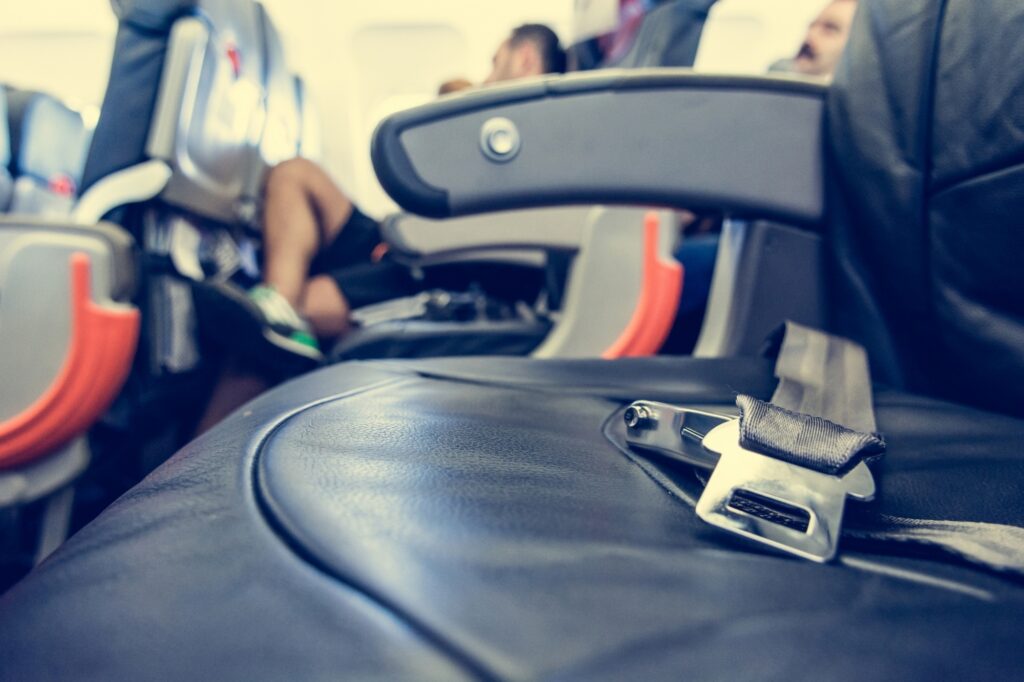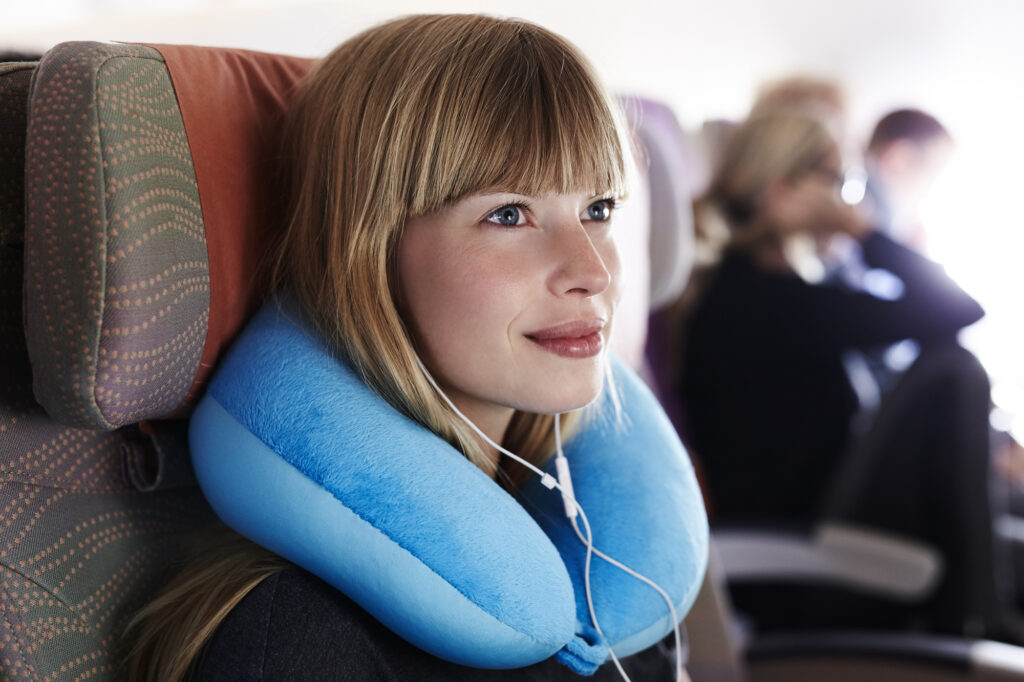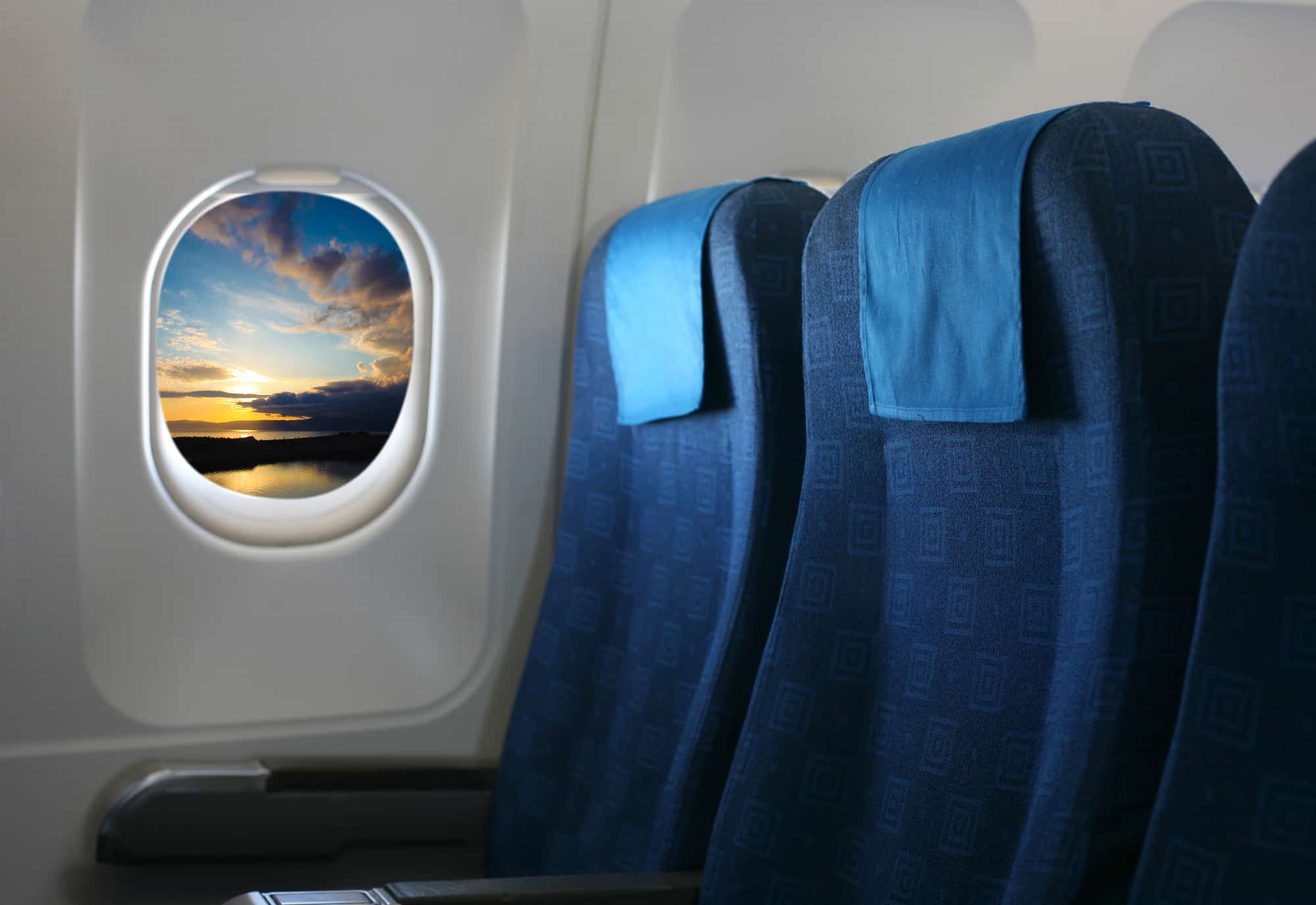Passengers come in all shapes and sizes, but the same cannot be said for airline seats. The sizes, measured in pitch and width, vary by aircraft model and airline class. Fortunately, there are ways to know beforehand whether you’ll fit into a particular airline’s seat without any trouble.
Here is how you can tell whether you will be able to comfortably fit in an airline seat:
- Visit SeatGuru.com
- Look up the size of the airline seats
- Refer these dimensions to your own body measurements
Knowing for certain that you will be able to fit just fine in your seat takes a lot of the anxiety away, but other questions may still linger. I will address some of them in this article and give you tips on making your flight even more comfortable.
1. Visit SeatGuru.com
This is an excellent example of how the internet makes our lives more convenient. Determining whether you will be able to fit into an airline seat can be done with literally just a few clicks.
SeatGuru, a website by Tripadvisor, details the sizes of a myriad of airline seats with all the variations by aircraft model and airline class. All this data is readily available online.
This website is essential for passengers of size, especially if they are flying a particular airline for the first time and are not familiar with the sizes of the seats onboard.
2. Look Up the Sizes of the Airline Seats
Airline seats are measured in pitch and width, and for many aircraft models and airlines, both of these details can be found on the SeatGuru website.
Once you have identified the specific aircraft and narrowed down the class and seat number, you’ll find accurate measurements for the seat in question.
For your guidance, pitch refers to the distance between a point on a seat in an airplane and the very same point on the seat in front of it or behind it.
The economy class seat pitch on most major airlines is 29 inches to 33 inches (74 to 84 centimeters). This measurement gives you an idea of how much seat space and legroom you will have.
On the other hand, the width is simply the measurement of the airline seat’s width. It can be more helpful in determining whether you will need to purchase an extra seat. Most US airlines have a width of 17 inches (43 centimeters).
3. Refer These Dimensions to Your Own Body Measurements
All that’s left for you to do at this point is to refer the size data from SeatGuru to your own body measurements.
You may already have this information on file. But if not, you will need to have your measurements taken.
Once that is done, you can find out in an instant whether you will comfortably fit in the seat of the aircraft you’re looking to fly on.
If the measurements indicate that you will not be able to fit in the airline seat, the rest of the article will help you figure out what you should do next.
What Happens if I Don’t Fit in an Airline Seat?
If you cannot fit in one airline seat, you will have to purchase an extra seat. Fitting in an airline seat is generally defined as being able to sit comfortably with both armrests down on either side of you. If you cannot meet this requirement, you will need an extra seat.
If you already know that you will not be able to fit in the airline seat before booking your flight, you can then simply purchase the seat next to yours.
However, some passengers find out that they will be requiring another seat only upon arriving at their designated number during boarding.
In some cases, the seat beside is vacant and can be readily purchased. But in other cases, passengers are not as fortunate, and some have had to wait for another flight with available side-by-side seating.
These scenarios highlight the importance of determining before the flight whether you will comfortably fit in your seat. This information will certainly save you a lot of trouble.
Will an Airplane Seat Belt Fit Me?

You can find out whether an airplane seat belt will fit you by taking your waist measurements and checking the seat belt length of the airline you will be flying on.
The seat belt length varies by airline, but it usually measures 39 inches to 45 inches (99 to 114 centimeters) long. You can find the exact measurements on the airline’s website.
What Happens if the Airplane Seat Belt Won’t Fit?
If the airplane seat belt won’t fit, you will need to use a seat belt extender. You may ask a flight attendant to provide you with one.
A seat belt extender is a device designed to be attached to a seat belt, giving it extra length. It allows a passenger of size to be safely buckled into their seat.
There are several seat belt extenders now on the market, and passengers of size have taken to purchasing their personal devices.
However, the Federal Aviation Administration cautions against using these and encourages passengers to use only those provided by the airline for safety purposes.
Is There a Weight Limit on US Flights?
There is no weight limit for passengers on commercial flights within the United States. Airlines are more concerned with how a passenger fits into their seat than how they tip the scales.
Airlines impose strict weight limits on carry-on bags and checked bags, but the same does not apply to the weight of their passengers. So long as a plus-sized passenger can fit comfortably in their seat, they may stay on the flight. But if they don’t “fit comfortably,” they will be required to purchase a second seat.
How To Be More Comfortable in an Airline Seat

Traveling by air comes with a lot of challenges for people of size. Many have taken to blogs and vlogs to document their experiences. They offer helpful guides for others looking to go on a trip and hopefully get around the difficulties.
I have put together some vital tips so you won’t have to rummage the web for them. Here is what you need to know to have a more comfortable flight:
1. Visit SeatGuru When Booking Your Flight
I have sung the praises of SeatGuru throughout this article, and I have no doubt you will do the same once you have taken advantage of the helpful information on their website.
When booking your flight, visit SeatGuru.com to find the size details of your potential seat. You can also use the site to find a more comfortable seat in a different class or upgrade to a seat with more legroom if you prefer.
By knowing the size of your seat beforehand—and having the assurance that you will fit in it—you’ll have one less thing to worry about. That will immediately take a weight off of your shoulders and allow you to enjoy yourself from the start of your trip.
2. Choose the Seat Most Convenient For You
This one is entirely subjective. You might prefer an aisle seat, or perhaps you would rather keep to yourself by the window.
Those for an aisle seat often choose to avoid the obvious inconvenience of wriggling past a seatmate whenever they need to visit the lavatory. There’s also the plus of being able to momentarily stretch their legs out on the aisle when it’s empty.
On the other hand, those who have better bladder and bowel control sometimes opt for a window seat away from the flight attendants and other passengers walking up and down the aisle. They would rather spend the duration of the flight in their little corner.
Whichever type of passenger you are, you can arrange to have the aisle seat or window seat when booking your flight.
3. Purchase an Extra Seat
If money is no object, I highly recommend purchasing an extra seat even if you are not required to do so.
It typically becomes a requirement to purchase an extra seat if you cannot be seated comfortably in one seat with both armrests down.
Some airlines, such as Southwest Airlines, are more considerate of their passengers of size and offer a free extra seat or a refund for a pre-purchased extra seat.
Other airlines will offer a refund only if there are other vacant seats on the flight.
4. Board the Airplane First or Last
Things can get quite hectic during boarding. Navigating through the aisle with people walking by or standing by as they stow away their carry-on luggage is a hassle, all the more so for passengers of size.
To get around this inconvenience, you should board the plane first or last. Either way, the aisles should be relatively clear and you can proceed unhindered.
5. Ask for a Seat Belt Extender
While many passengers of size encourage the use of a seat belt extender, some are still reluctant to ask for one out of embarrassment.
First of all, needing a seat belt extender is not something to be ashamed of. On the other hand, it would be folly to go on a flight without being securely fastened into your seat.
Flight attendants are very considerate when it comes to this and will provide you with a seat belt extender discreetly.
You may also approach the attendant at the gate while waiting to board, inform them of your seat number, and request that they go ahead and put a seat belt extender at your seat.
6. Disembark the Plane Last
For reasons similar to those given in the fourth tip, you should disembark the plane last. The convenience of boarding the plane first does not apply here, as most everyone will immediately be up on their feet once the seat belt sign goes off.
It would be best for you to wait until the aisles clear out before you make your way out of the aircraft. There will be plenty more space for you to maneuver then. The flight attendants will have all their attention on you and will be able to assist you in any way you need.
Final Thoughts
Booking a flight can be a cause of anxiety for people of size, their primary concern being whether they will be able to fit in the seats on the airline they intend to fly on. Fortunately, the internet has provided a way to ease these worries.
Simply visit SeatGuru.com and you’ll have all the information you need on the seat sizing of the different aircraft models and airline classes.
Refer these details to your own body measurements, and you’ll know whether you’ll be able to fit into that particular seat before ever boarding the plane.
Sources
- SeatGuru by Tripadvisor
- CNN Travel: 17 tips and tools to make your economy class seat more comfortable
- Executive Flyers: How Do I Know If I will Fit in an Airline Seat? (Size Regulations By Airline)
- Travel Gear Discounts: Will I Fit in an Airplane Seat?
- Outdoor Tag: Worried About Waist Size to Fit in Airline Seat? (Know More)
- Measuring Stuff: What Size Is Too Big To Fit In An Airline Seat?
- The Points Guy: Plus-size flying: Tips for a more comfortable flight from a “passenger of size”
